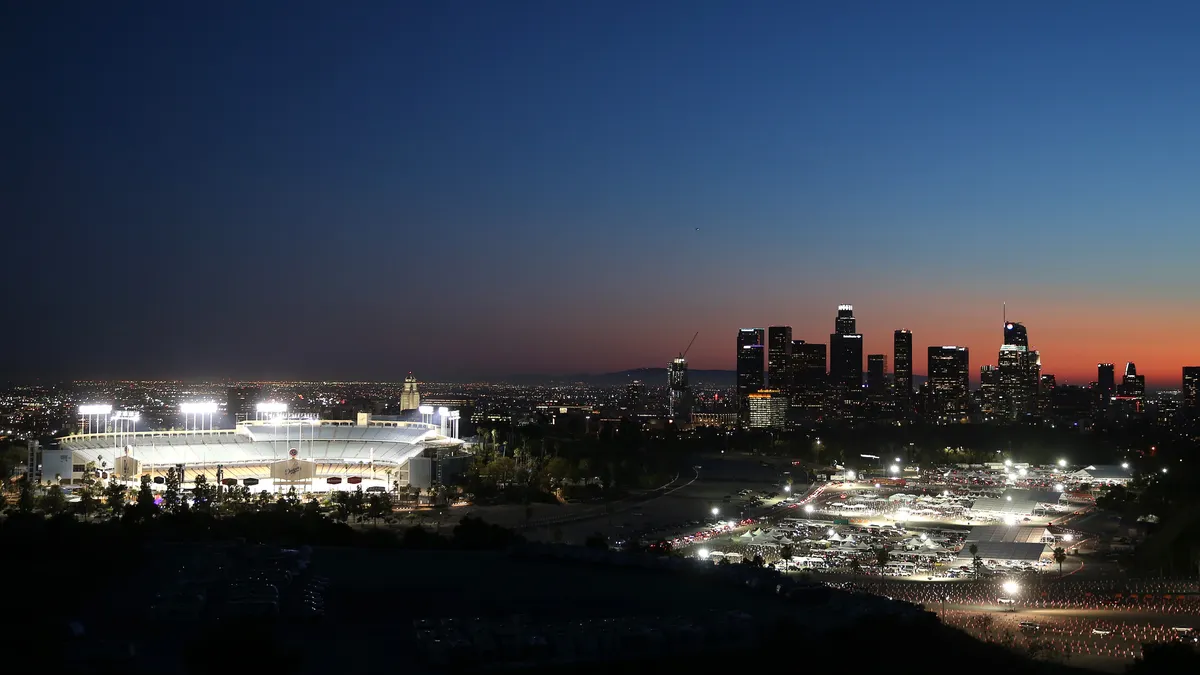Dive Brief:
- California's electric system is in a better position than it was last summer, when a record-breaking heatwave led to rolling blackouts in the state, but there's still cause for concern, according to a new assessment from the California Independent System Operator.
- Although forecasted load levels have not significantly changed under normal conditions, CAISO could have a tough time meeting demand this summer thanks to a second year of low hydroelectric energy supplies and the higher possibility of extreme weather events, the report found.
- CAISO's assessment indicates that additional procurement has left California slightly better off, said Seth Hilton, partner with Stoel Rives. "But we probably have a long way to go before we get to a point where we have sufficient capacity where we're not concerned about summer heatwaves," he added.
Dive Insight:
Following last year's blackouts, California's energy agencies have been scrambling to ensure that the electric grid is prepared for summer 2021. Soon after the outages occurred, regulators put together a root cause analysis which pointed to a variety of factors that played a role, including increased demand due to the heatwave, insufficient resource planning targets and certain market practices.
The California Public Utilities Commission (CPUC) has since issued two separate decisions tackling the issue. The first, approved in February, directed the state's utilities to contract additional capacity from a variety of sources, including incremental capacity from existing power plants — a provision that drew strong criticism from environmental groups, who pointed out that it opened the door for more gas contracts.
In March, the CPUC approved a second decision which included both demand-side and supply-side measures, including an additional procurement of up to 1,500 MW for both 2021 and 2022.
The new resources, as well as changes to CAISO's market and operations, have made the grid operator "cautiously optimistic" that there will be enough electricity to meet summer demand, CAISO President and CEO Elliot Mainzer said in a statement.
"But there are remaining risks to reliability, such as an extreme prolonged heat wave affecting wide swaths of the West, or serious wildfires," he added.
One potential reason for concern is that California is experiencing a second year of lower-than-normal rainfall, squeezing hydroelectric energy supplies. The report notes that the average water levels in large reservoirs is 70% of normal this year — compared to 101% of normal in 2020.
In addition, more than 3,900 MW of new installed generation capacity will have come online in California from June 1, 2020 to September 1, 2021, according to CAISO's report. But about half of that is coming from solar, Hilton explained, which doesn’t necessarily address California's challenge of meeting demand at the neat peak in the evening hours.
Looking out to next year, the state is going to need a lot of additional procurement — especially energy storage, which will help address the net peak, said Hilton.
“Even if we get through this summer, if you look at the resources in California, there is a capacity shortfall,” he said
CAISO has also identified energy conservation as a critical effort to support the grid when it is strained, especially in the evenings when demand is high but solar production is waning. The grid operator intends, when conditions are predicted to be tight, to continue making calls for consumers to cut down their energy use from 4 p.m. to 9 p.m.
The August 2020 heatwave served as a wake-up call for the entire state, Cisco DeVries, CEO of OhmConnect, said in an emailed statement.
"The unfortunate fact is that — in spite of significant efforts by all three energy agencies to prevent blackouts this coming summer — the grid is still vulnerable to extreme weather. Demand response providers played an important role in helping to mitigate blackouts in 2020 — and OhmConnect is devoting significant resources to helping the state keep the lights on this summer," DeVries added.















